
By Judy Carmack Bross
“Starting a flower business has felt like tying a line to previous generations of floral lovers. I love working with clients to create their own story through flowers.”—Lowell Hutchinson.

Profiling young Chicago entrepreneurs has delighted Classic Chicago writers, and today we introduce Princeton graduate Lowell Hutchison, a new florist in town who cleverly mixes dried flowers with other components for wintery bouquets. Her wreathes last well into the New Year, great for when you hate to take down your holiday welcome.
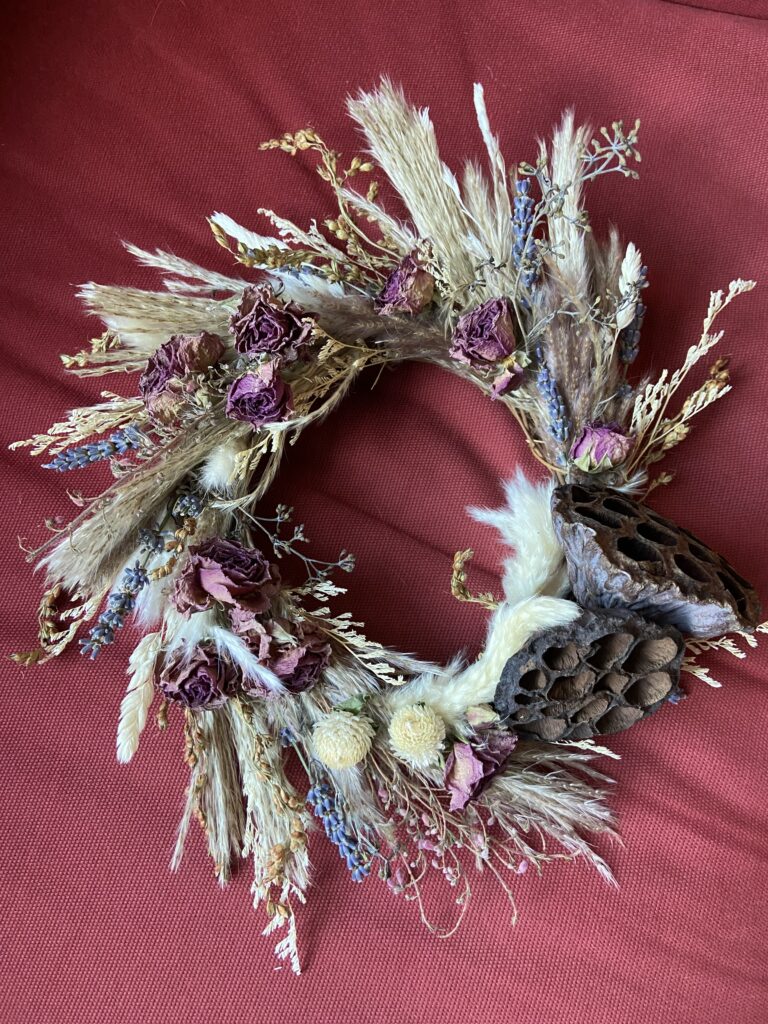 |
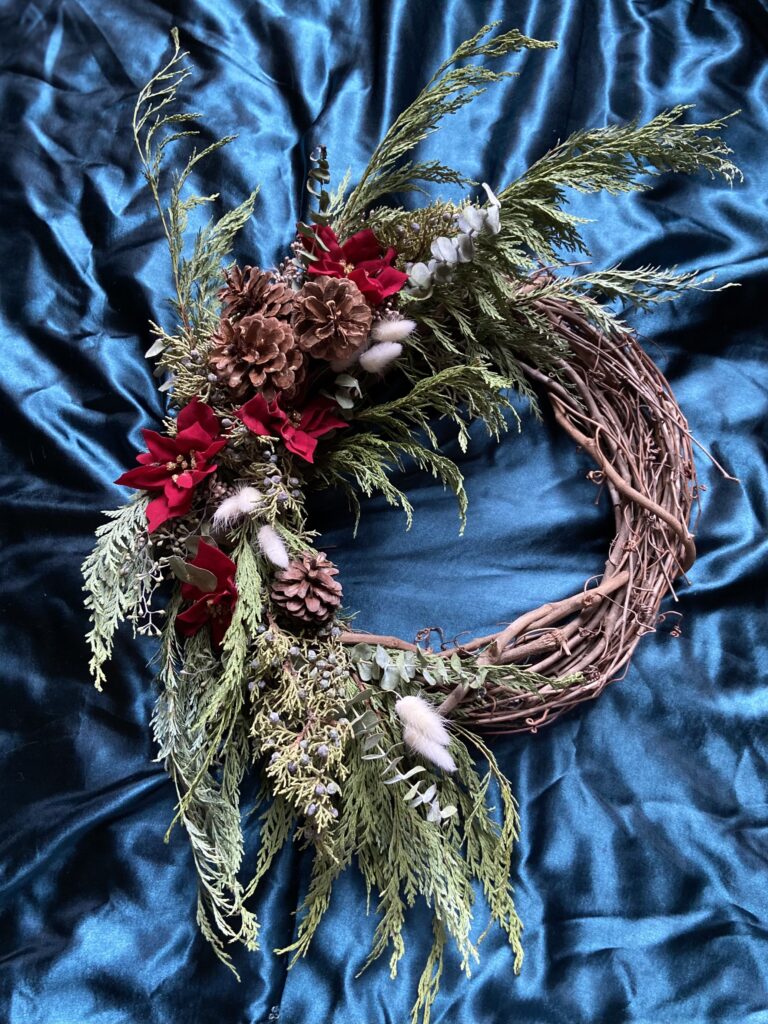 |
We sat down with Lowell recently to for arranging tips and to learn about developing a new floral business in Chicago.

A holiday arrangement for a recent tea at an elegant Chicago club.
CCM: Tell me where you grew up. Was there a particular flower that you loved best?
LH: “My love for flowers can be traced back through the generations of my family. Both my grandmother and her mother were avid gardeners and loved creating floral arrangements. My grandmother introduced me to floral arranging and gardening when I was around 3 years old. I grew up in Carlisle Massachusetts, and she lived in Concord, the next town over. We spent many days playing in her garden- she patiently taught me how to plant pansies in her porch pots and weed the flower beds in her backyard. She had beautiful rose bushes, morning glories, and soft patches of lambs ear. The flower I associate most with her and my early gardening days are pansies. My logo flower is a pansy in honor of my grandmother, and it helps me feel that she is still designing with me. Pansies or violas are a wonderful plant for container gardens in areas with colder climates like Chicago and Boston. They bloom in early spring and late fall when it is too cold for other flowering plants; they are frost resistant and can bloom multiple times throughout the season.
“Starting a flower business has felt like tying a line to previous generations of floral lovers. Sometimes I will send a picture of an arrangement to my mom, and she will say ‘Oh wow that looks like something Oma (my great grandmother) would make!’”
CCM: What brought you to Chicago?
LH: ”I moved to Chicago after graduating from Princeton University. I felt like I was ready to explore a city away from the east coast, but not as far as my friends moving to LA or Seattle. Chicago seemed like a great balance- and I’m so glad I moved! It is a beautiful city filled with flower enthusiasts. The Chicago Botanic Garden in particular is a magical and special place.”
CCM: What’s it like starting a flower business?
LH: “ Starting my own business felt like a natural progression in my floral career. It is very rigorous and challenging, but I feel most alive when I am being challenged. My favorite part about having my own floral business is having full control over my creative direction. Each flower shop where I have worked in the past has had a unique design voice, and it feels good to share my own design voice through my own venture. I love creating lush centerpieces filled with greenery and texture. I gravitate towards flowers with a natural beauty with stems that have been foraged or purchased from local farms: my favorite arrangements feel like a woodland fairy wonderland.

“In addition to flower arranging, I have always had a passion for writing and storytelling. I was an English major at Princeton, and I wrote quite a few essays analyzing the presence and language of flowers in literature. I find it a fun creative challenge to tell stories through my bouquets. For instance, I once designed a bouquet for a friend who was in a production of “Into the Woods.” I used specific varieties to signify the different characters and motifs in the musical. I love working with clients to create their own story through flowers as well. If someone says, “please include sunflowers in this arrangement, it’s their favorite flower” then the fresh sunflower bouquet not only is beautiful because it is their favorite, but it also says “I listen to you, and I took the time to request your favorite because I love you.”

“Or, sometimes a client will request certain flowers in their bridal bouquet to represent loved ones that have passed so they can be with them on their special day. Because flowers are naturally beautiful and bring people joy, it is easy to create special meanings through the individual blooms. Creating my own business has given me freedom to explore my creative expression.”
CCM: Tell us what type of arrangements seem the most popular now in Chicago. What type of events are you working on particularly now?
LH: “Disco balls have been very popular in arrangements for weddings and baby showers- both in large ceiling installations mixing disco balls with greens and hanging flowers and in table centerpieces or around votive candles. There is something beautiful and exciting about the contrast between the delicate blooms and the flashy disco balls. And, while many people are still opting for a wedding of classic whites and greens- vibrant colorful floral is becoming more popular, and fun to design.
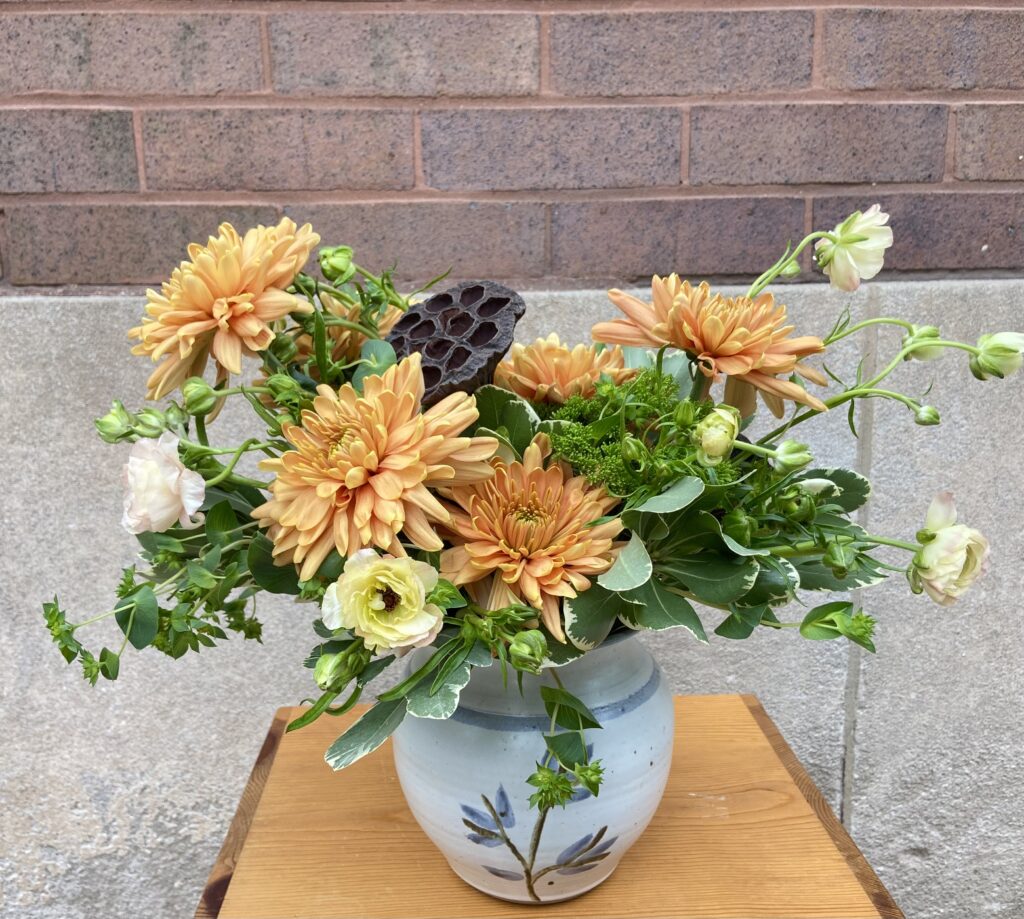
“As the wedding season is drawing to a close, most of my work is now filling clients’ weekly floral subscriptions. Each week a client will receive a fresh bouquet of seasonal blooms. While designing for a wedding is fun and exciting, I also enjoy the smaller scale work because I can take my time in creating something beautiful- whereas in a wedding setting the goal is often speed.”
CCM: I know that you like to use dried flowers, leaves and other gifts of nature? How do you think it is best to weave them in?
LH: ”I think dried flowers add incredible texture to arrangements especially varieties of grasses and seed pods, and are great for a piece that needs to be longer lasting like a wreath. If I have extra flowers or greens after creating a fresh arrangement, I will dry them and save them for a dried bouquet or wreaths. Usually I will keep dried elements separate from fresh arrangements, since the dried flowers don’t need water and can get moldy if they are kept in water too long.”
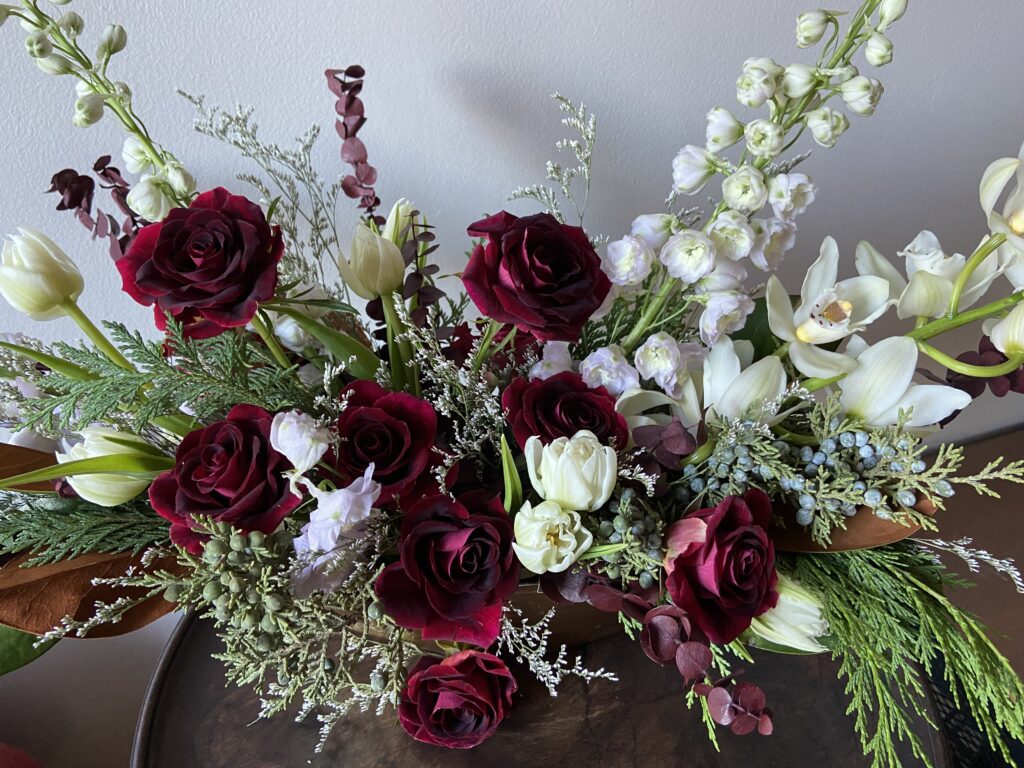
CCM: We would love your tips on arranging and also where to find flowers. How do you build a big arrangement? How do you start?
LH: “In the summer, Chicago’s farmers markets have some wonderful flower growers and vendors who sell bouquets for very reasonable prices.
“In terms of creating an arrangement, I always think about texture, shape, color, and the vessel. I like to include something sturdy, something soft, and something light and airy. A wide variety of shapes and weights will give your arrangement a natural, beautiful feel. Next, think of the shape of each flower and try to choose one in each variety of shape: round/focal, spire, and some filler. For instance, round focal flowers might be roses or dahlias, spires might be snapdragons or delphinium, and filler could be anything from tulips to feverfew.
“When you’re picking your blooms, try to keep the colors in a cohesive conversation. I like to stick to no more than three colors that have similar undertones. For instance, one of my favorite palettes is white and yellow; it is simple and cheery, and it will always look pleasing to the eye. I also enjoy a cool toned arrangement- maybe red, white, lavender, and green.
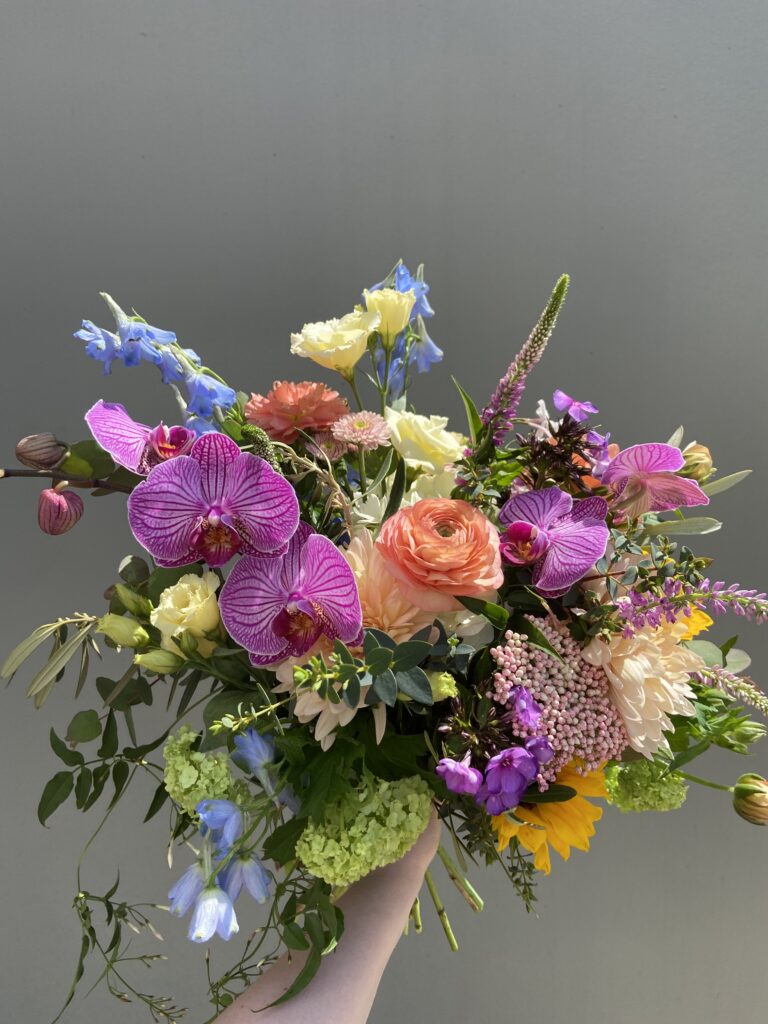
“Make sure each color has two flowers with different shapes and weights so that there is texture and variety while still feeling whole. The lavender color in this palette will balance the contrast between red and white.
“Finally, a vessel. A vessel could be a classic vase, bowl, pitcher, or urn. You can get creative here! For a centerpiece, you will want to choose a low and wide vessel for your arrangement. Think of how the vessel will sit on your table and how it will be best appreciated by your guests. If you were creating a statement entrance piece, choose a vessel that will wow your guests as much as the flowers inside.”
CCM: What are some of the most unusual things have you found to put in your arrangements?
LH:” I love including fresh fruit in my arrangements, especially around the holidays. I created a Thanksgiving arrangement with sunflowers and pomegranates that was very fun. I also helped another florist with a wedding which used lemons and other citrus in the centerpieces.”
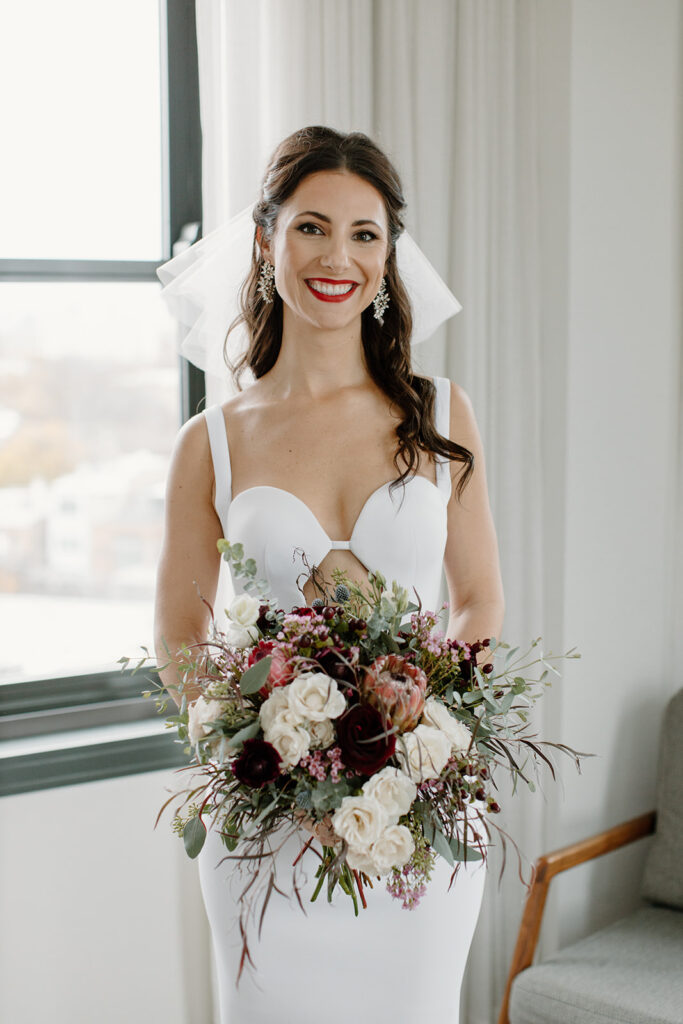
Recent bride Sara Dalke, with a bridal bouquet by Hutchinson.
CCM: What about for bridal bouquets—what are some of the ideas most often selected?
LH:” Right now, brides are opting for bouquets which have a light and airy wildflower feel rather than the tight round ball style that was popular in the early 2000’s and 2010’s. Roses are making a comeback as well. While it used to be that people avoided roses and wanted only “unique” blooms- now some brides are opting for simple long stem white rose bouquets.”
CCM: Are there flowers that seem to last the longest?
LH: “Orchids, chrysanthemums, and greens usually last the longest ,7-14 days. Luxury flowers like dahlias, cosmos, or peonies tend to have the shortest vase life, three to five days.”
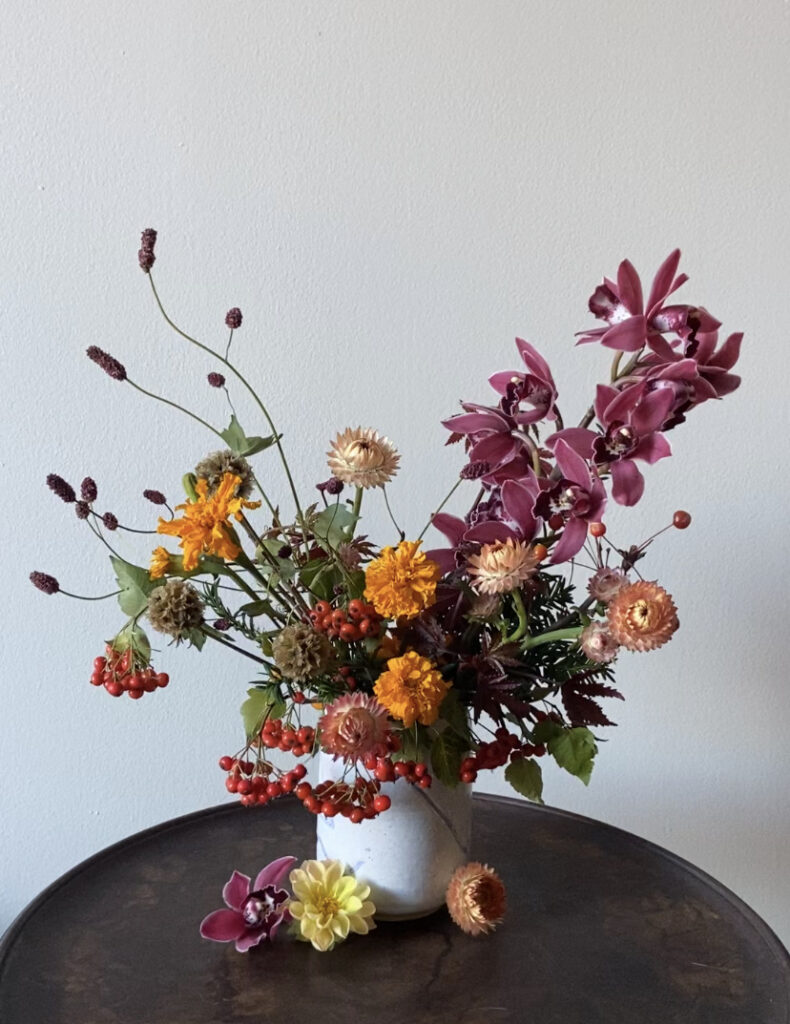
CCM: Where do flowers come from to Chicago, i.e., what countries are now sending most of the flowers to Chicago?
LH: “During the summer and fall months, many of the flowers come from local farms in Illinois, Indiana, and Michigan. Some tropical varieties like orchids, anthurium, and protea usually come from California, Australia, or South Africa. However, there are a few greenhouses in Illinois that grow orchids.
“The top two global rose growers are Columbia and Ecuador, and many other varieties of flowers are shipped from Holland. When I purchase my flowers, I like to shop from local wholesalers and farms during the warmer months, and in the winter I buy from farms which value sustainability. For instance, Rosaprima is a sustainable farm in Ecuador that specializes in roses and ranunculus.”
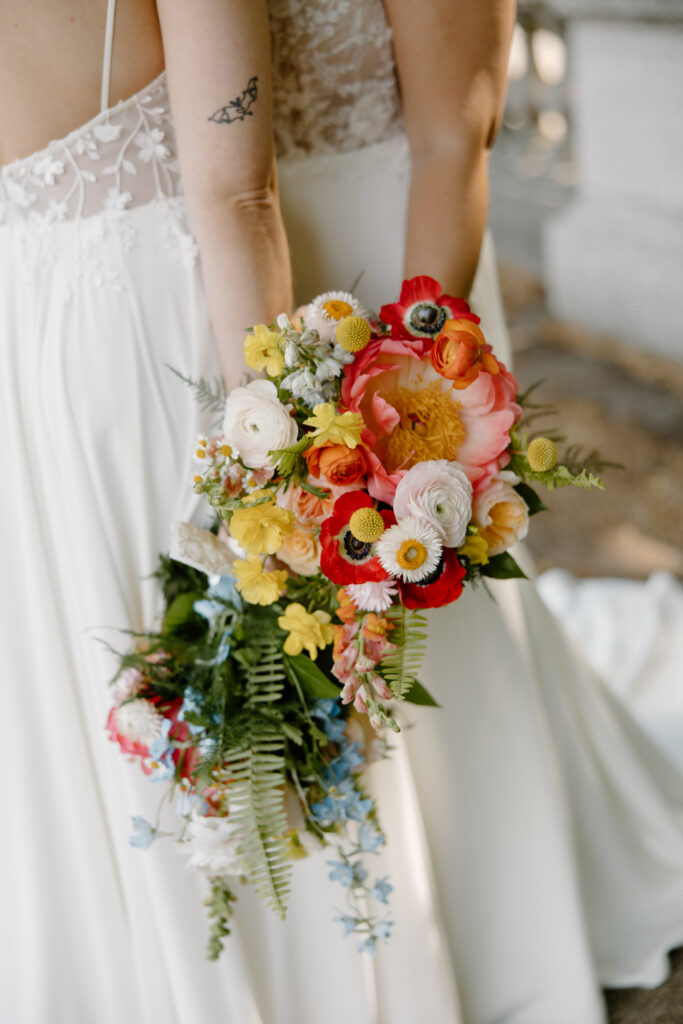
CCM: Are there local sources that you draw from, greenhouses or farms?
LH: “ There are a few microfarms in Chicago which grow mostly tulips and dahlias like Eudaemonia Flowers in Logan Square and Monarch Beauty Farms in Lincoln Square. This upcoming summer will be the first summer of the Chicago Flower Market, where flower farmers in Michigan, Illinois, and Indiana will come together to sell flowers to florists in the Chicago area. I’m excited to have local flowers be more readily accessible to florists.”
CCM: What are the challenges of dealing with flowers?
LH: “The biggest challenge is keeping the fresh flowers alive and looking beautiful. In many cases, flowers travel across the world to get to Chicago, and it is a miracle they still look fresh and beautiful. Because of the labor it takes to ensure that flowers look good, flowers are expensive and it can be difficult to explain to clients why they should spend more on a bouquet from a specialty florist when they could get something from the grocery store for much less. But the higher price includes the labor of all the farmers who grew the beautiful flower, the wholesaler’s labor, and then my labor as a designer. Not only will the quality of each individual flower be better than the grocery store flower, but the client is paying for my expertise in creating a unique and wonderful piece of art.”
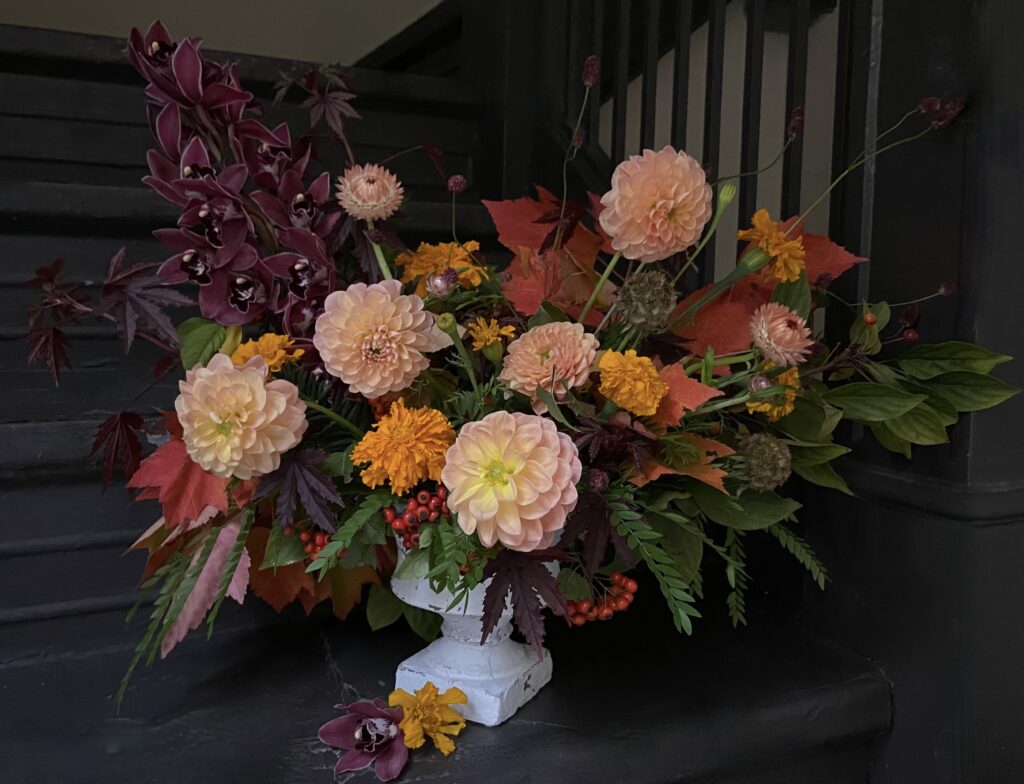
CCM: Are there tips in general about a start up business?
LH: “I just started my business in September, so I think it is too early for me to give out advice just yet. The most helpful advice that was given to me however was to grow slowly. It can be enticing to say yes to everyone and everything when you start out, but then the quality may suffer if you aren’t set up to support what you are saying ‘yes’ to. I am trying to heed that advice and be thoughtful and deliberate in providing high quality service to my customers.”







